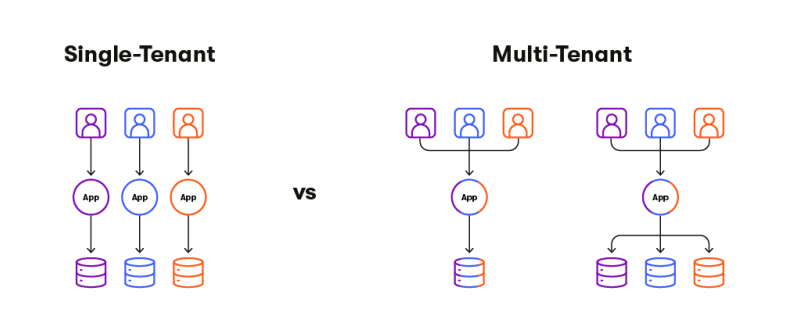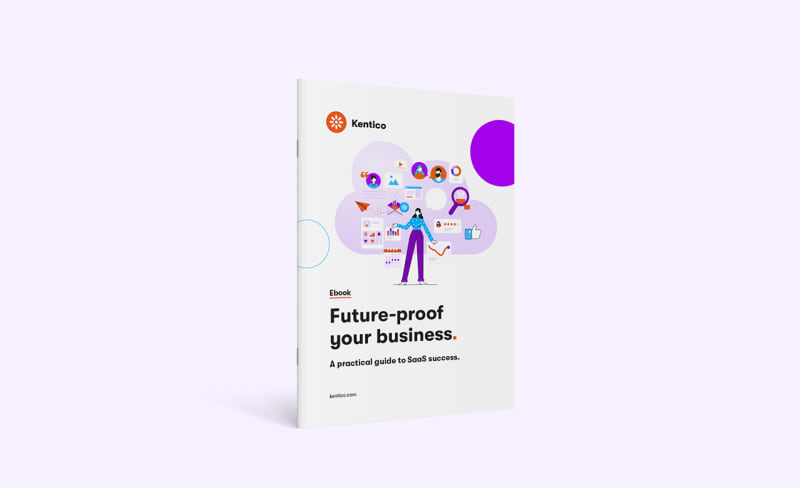When marketing and content teams start evaluating content platforms, there’s one term that almost always comes up: SaaS. It’s often included in RFPs as a baseline requirement, seen as a sign of reliability or future-readiness. But within SaaS is a wide range of architectures and trade-offs that can shape everything from how your website runs to how smoothly your team works.
Before you commit to a new platform or assume that SaaS means the same thing for every vendor, it’s worth taking a closer look at what the term really means and why that matters for your CMS.
What does SaaS really mean for your CMS?
Imagine moving into a fully furnished apartment. The furniture is ready, the Wi-Fi works, the fridge is stocked, and you can start living there right away. It’s low hassle and already maintained for you. But while you can decorate the space and add a few personal touches, you can’t knock down any walls or install new kitchen cabinets. The structure is already established, that's the tradeoff.
That’s basically how Software as a Service (SaaS) works. The software is hosted in the cloud and managed entirely by the vendor. You use it via a web interface, while they take care of everything behind the scenes: updates, uptime, infrastructure, and security.
For marketing and content teams, that usually translates to fewer roadblocks, less reliance on IT, and faster access to new features.

“What decision-makers truly care about is how the platform will work for them: the editing or marketing features, the scalability, the AI-powered capabilities, the integration possibilities, and the long-term operational costs and fit.”
Why the architecture matters
SaaS isn’t a single setup; it’s a model with many variations. Some platforms run every customer on the exact same setup. Others offer more isolation, with dedicated environments or separate databases. And some go even further, offering fully separated application layers but still managing everything through a shared admin layer.
These differences impact how much flexibility, performance, and customization you get with your platform. They also affect how well the platform can support things like compliance, security needs, or your ability to manage multiple brands and regions.

“Not all SaaS models are created equal. In fact, there are several different architectural approaches to SaaS, each with distinct advantages and drawbacks. Understanding the nuances between them can be critical to ensuring your CMS or DXP investment will work for you now and in the future.”
Another important consideration, especially when you're looking at the architecture, is whether the platform uses a single-tenant or multi-tenant setup.
In a single-tenant model, each customer runs in an isolated environment, offering greater control and configuration flexibility.
Multi-tenancy typically means multiple site instances share the same codebase but remain strictly separated. This is ideal for managing multiple brands or sites with distinct users, content, and data.


Clearing up confusion
SaaS is often mentioned alongside terms like private cloud and multi-tenancy, but they’re not the same thing.
- SaaS means the vendor manages everything for you; hosting, updates, and infrastructure, so you can focus on using the software.
- Private cloud gives you more control with a dedicated setup, often managed by your team or a partner. It’s more customizable but comes with more responsibility.
- Multi-tenancy means customers share the same system with separate data, while single tenancy gives each one their own setup and more control.
Knowing which definition applies helps everyone stay aligned, especially when exploring options with different vendors and when discussing SaaS with your marketing or IT teams.
Focus on fit and understand the labels
SaaS is a powerful model and for many teams, it’s the most efficient, scalable, and future-ready option. Like any approach, the value it delivers depends on how it’s implemented and how well it aligns with your needs.
But not every SaaS platform is designed to support complex content models or strict compliance requirements. Some prioritize rapid updates and low-cost delivery; others aim to give customers more control and configuration options. Neither is inherently better. The key is choosing the one that fits your organization.

“When SaaS is mentioned in a procurement discussion, it’s essential to dig beneath the surface. What matters most is whether it will meet the needs of your organization and what its operation looks, and costs. Not just today, but in real terms when you are using it in 6 months or even 24 months' time.”
SaaS can absolutely deliver the speed, reliability, and innovation today’s marketing teams need. Just make sure you’re choosing a version of SaaS that supports the way you work, now and as you grow.
An example of SaaS with built-in speed and control
Xperience by Kentico's SaaS option gives teams a real head start. Kentico’s in-house experts manage your cloud environment, so you can focus on creating standout digital experiences instead of configuring infrastructure.
Your environment is ready to go in just 30 minutes, and it’s hosted in the region of your choice using a single-tenant architecture. Easily monitor your environment, while Kentico handles ongoing updates, security enhancements, and feature deployments in the background.
Wondering what SaaS options are right for your business? Download our free ebook, Future-proof your business: A practical guide to SaaS success and learn how to select a solution that support your goals.


